Get Growing with Mickey Rathbun: Everything’s coming up roses: Artist Robin Freedenfeld’s garden is her biggest canvas yet
| Published: 06-01-2023 4:48 PM |
I’ve always thought that a truly successful garden is one that feels like it’s always been there, so natural that it seems inevitable. When you step into the artist Robin Freedenfeld’s garden, one of the six locations on the Forbes Library Annual Northampton Garden Tour this year, you can’t believe it hasn’t always been that way. In fact, when Freedenfeld and her late husband, Mark Immerman, bought the property 40 years ago, it was a two-acre patch of dense woods. As they began to dig around the property, they uncovered a lot of broken glass and even a whole car. “It might have been the town dump,” said Freedenfeld. They cleared a space big enough for their house, a modest structure they’ve since added on to, and a six by eight foot garden plot.
“I didn’t know much about gardening when I started,” explained Freedenfeld. “I certainly didn’t have any grand plan.” They cleared the property gradually, as they could afford to, and Freedenfeld began to create more garden areas. “It was changing constantly,” she said. The property is now an appealing array of perennial beds, borders and specimen trees planted in and around a gently sloping lawn. Several bluestone patios as well as a lawn swing and hammock invite leisurely contemplation throughout the garden. Many of Freedenfeld’s trees and shrubs were planted to commemorate the passing of loved ones. “Everywhere I look I’m reminded of people,” she said.
After her husband died 11 years ago, she planted a special garden in his honor. The round space, which she calls her Yin Yang garden, has an S-shaped stone path through the center, and is planted with a pink-flowering Calycanthus (sweetshrub), witch hazel and a Celestial Series dogwood. A trellis in the middle is planted with sweetly fragrant ZephirineDrouhin roses.
Freedenfeld is a painter with a natural gift for composition. In the garden, she thinks in terms of color, leaf and texture. Her palette, which runs to lavender, pink, blue and purple, is reflected in her choice of peonies, nepeta, purple poppies, deep blue iris and stoloniferous phlox. Patches of pale blue forget-me-nots flow through the perennials, gracefully tying together different elements. “The one color I’ve avoided is orange,” she said. “But a few years ago some volunteer orange poppies sprang up and I’m starting to like the color!”
Foliage is as important to Freedenfeld as flowers. “I like the garden to be pretty when it’s not blooming,” she said. To that end, she relies on a wide variety of foliage plants to provide color, shape and texture. Ferns, including a low-growing painted fern that acts as a ground cover and large single specimens, light up shady corners. There are innumerable varieties of hostas, from giant ones too big to wrap your arms around to diminutive, slender-leafed varieties in every conceivable color combination.
Fragrance is another notable feature in Freedenfeld’s garden. This time of year, the air is redolent with the sweet smell of two Miss Kim lilacs planted behind the house. Scented roses, supported by trellises and arches, rise above drifts of perennials. Honeysuckle and Itea perfume the air of the garden surrounding the swimming pool.
Freedenfeld’s garden seems like a natural extension of the surrounding woods, a mixture of mature oaks, maples and walnut trees. “The naturalness comes from the overstory,” said Freedenfeld. “You feel like you’re out in the middle of nowhere.” A wildlife trail runs through the property, coming up from the Connecticut River, and continuing on towards Smith Vocational School. Bobcats, foxes and the occasional bear pass through the garden. The three levels of vegetation – overstory, understory and garden – provide a haven for birds. Throughout the garden are whimsically designed birdbaths and birdhouses, including one shaped like an acorn where bluebirds nest every year. Freedenfeld sees orioles, hawks and even herons that fly up from the river. A yellow-bellied sapsucker drills its trademark straight rows of holes around the branches of a Hakuro-Nishiki willow. “It’s not great for the tree, but I live with it!” she said.
Her approach to gardening is refreshingly unfussy. Having healthy, rich soil is an absolute necessity. “There’s no point in buying an expensive plant and planting it in poor soil,” she said. She adds abundant compost to her garden beds and uses plenty of mulch. “Little plants are happy and they become big plants.”
Article continues after...
Yesterday's Most Read Articles
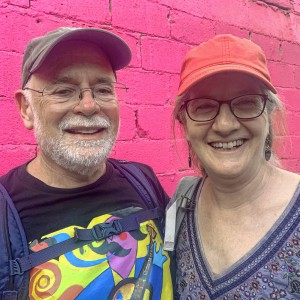 ‘Our hearts were shattered’: Moved by their work in Mexico soup kitchen, Northampton couple takes action
‘Our hearts were shattered’: Moved by their work in Mexico soup kitchen, Northampton couple takes action
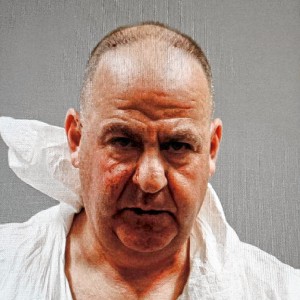 Springfield man charged with murder in Holyoke stabbing
Springfield man charged with murder in Holyoke stabbing
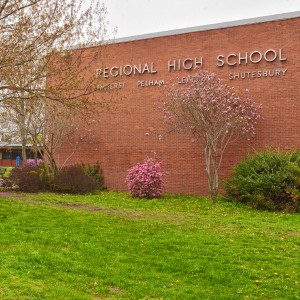 Amherst-Pelham schools look to address school absences with new plan
Amherst-Pelham schools look to address school absences with new plan
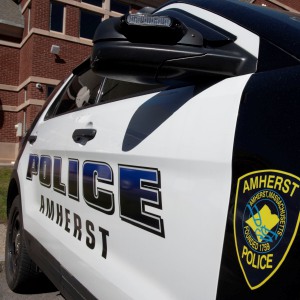 Two men dump milk, orange juice over themselves at Amherst convenience store
Two men dump milk, orange juice over themselves at Amherst convenience store
 Next 5-story building cleared to rise in downtown Amherst
Next 5-story building cleared to rise in downtown Amherst
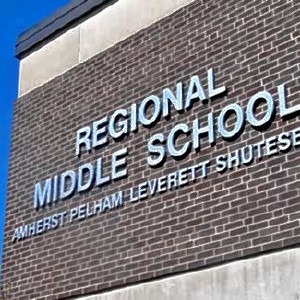 Three Amherst Regional Middle School counselors absolved of Title IX offenses
Three Amherst Regional Middle School counselors absolved of Title IX offenses
Freedenfeld also believes in the importance of choosing the right location for each plant. She’s not afraid to move plants around till she finds their happy place. She points to a Kirengeshoma (yellow wax bells) growing in the shade of a Japanese red maple. “I’ve moved that three or four times,” she said. “I’ve finally found the right place for it.”
Pruning is another critical aspect of Freedenfeld’s gardening. She has honed her skills by taking pruning classes at Berkshire Botanical Garden in Stockbridge “You don’t always think about pruning when you buy a tree,” she said. “It’s one thing to plant it in good soil with the right amount of sun. But it will get gangly and unruly fast if you don’t prune it.” She prunes to improve the structure of shrubs and trees and also to train shrubs such as Rose of Sharon and willow to grow as small trees with a single trunk.
Freedenfeld has become more interested in native plants in recent years. “When something dies I buy a native plant to replace it,” she said. Her new additions include a low-growing leucothoe, pussy toes and milkweed from Nasami Farm. She doesn’t use pesticides. “It’s all about the food chain,” she said. “You kill the insects, but then the birds eat the insects and die. So I give up and say, ‘Okay, that’s yours.’”
“The garden is well established at this point,” she said. “I wasn’t sure I’d ever be able to say that!” She rarely buys plants these days. A flourishing spirea came from a friend’s house, where it was growing through a crack in the sidewalk. “She pulled it up and was going to throw it out,” said Freedenfeld. She likes to divide and transplant what she has. Many of her plants, including more than a dozen blue lace-cap hydrangeas, all came from a single “mother plant.”
Freedenfeld devotes most of her time to her painting. But she has worked out a reliable system for maintaining the garden. Every day she walks around the garden, jotting notes on a clipboard about what needs to be done, including plants to be moved or pruned. She reserves Fridays for the garden, working a full day through her to-do list. She uses very little hired help. “The garden isn’t perfect,” she said, tugging at a few small weeds. “You can’t be on top of a garden this size. I do what I can and accept what I can’t.”
“Sometimes I look around at everything and I wonder how this happened,” she said as she strolled across the lawn. “It feels like paradise! I think that every day.”
The Forbes Library Northampton Garden Tour will take place June 10, from 10 a.m. to 4 p.m., rain or shine. It’s a great opportunity to put down your gardening tools and enjoy the fruits of other gardeners’ labors. In addition to Freedenfeld’s garden, there will be five other choice gardens on display that reflect a variety of appealing landscape styles, plant collections and approaches to garden design. There will be informational handouts at each garden as well as volunteer guides to answer questions.
The scenic Route 9 route offers opportunities to enjoy live music and observe plein air painting that will take place in several of the gardens. Tickets provide maps for the self-guided driving tour as well as a recommended bicycle route provided by Friends of Northampton Trails.
The tour also includes a raffle with prizes for gardeners and other supporters of Forbes Library. This year’s prizes include a weekend farmstay in Maryland, a free garden consultation, a beautiful garden bench and a hand-crafted rug as well as compost, garden supplies and gift certificates. Raffle tickets are available to purchase in advance at the Forbes Library and at one garden on the day of the tour.
Tickets are available for $20 each through June 9 at Baystate Perennials, Wanczyz’s Nursery, Gardeners Supply Co., Cooper’s Corner, State Street Fruit Co. and the Forbes Library. Tickets are $25 on the day of the tour at Forbes Library from 10 a.m. to 1 p.m. All proceeds from the tour go to support the historic Northampton library and its programs, events and projects.
]]>

 Valley Bounty: Grass-fed animals that feed the grass: Gwydyr Farm in Southampton focuses on ‘restoring the connection between land, food and people’
Valley Bounty: Grass-fed animals that feed the grass: Gwydyr Farm in Southampton focuses on ‘restoring the connection between land, food and people’ Weekly Food Photo Contest: This week’s winner: Mary Chicoine of Easthampton
Weekly Food Photo Contest: This week’s winner: Mary Chicoine of Easthampton  Speaking of Nature: A romantic evening for two birders — To hear the wonderful sounds of the Saw-whet Owl one must go outside at night
Speaking of Nature: A romantic evening for two birders — To hear the wonderful sounds of the Saw-whet Owl one must go outside at night Speaking of Nature: Where have all the birds gone?: They’re there, and here’s a handy tool to keep track of their appearances
Speaking of Nature: Where have all the birds gone?: They’re there, and here’s a handy tool to keep track of their appearances
